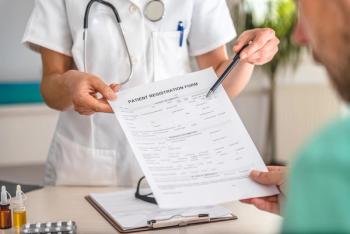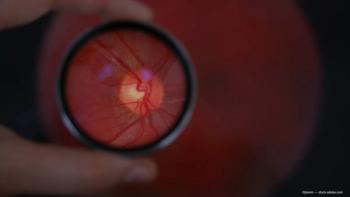
Beyond the surface: Tackling complex dry eye cases
Ophthalmologists weigh in on evolving diagnostic tools, emerging therapies, and practical approaches for managing today’s most challenging ocular-surface cases.
Dry eye and ocular surface disease continue to challenge clinicians, particularly as patient populations grow older and systemic comorbidities become more common. To gain insight into how the field is evolving, the Eye Care Network reached out to leading ophthalmologists regarding emerging strategies and technologies shaping modern management. This Q&A explores navigating refractory cases, the promise of new biologic and topical therapies, advances in diagnostic precision, and the innovations poised to redefine tear-film and ocular-surface assessment in the years ahead.
Participating in the discussion are the following:
- Christopher E. Starr, MD, associate professor of ophthalmology; director, refractive surgery service; and director, ophthalmic education with Weill Cornell Medicine, New York-Presbyterian Hospital in New York, NY.
- William Trattler, MD, refractive, corneal and cataract eye surgeon at the Center For Excellence In Eye Care in Miami, FL.
Note: Transcript edited for clarity and length.
How do you approach refractory dry eye in patients with systemic comorbidities?
Starr: I don’t believe in “refractory dry eye,” Ha! I’m a firm believer that all dry eye disease (DED)/ocular surface disease (OSD) is treatable and there is always a solution if you investigate thoroughly enough and utilize all appropriate and necessary treatments, but sometimes it can take some time to get there. If systemic conditions like autoimmune disease are comorbid and contributing to the DED, then they should managed and controlled as well.
When people say their dry eye is “refractory” it usually implies to me that DED is not actually the root cause of the symptoms and generally an alternate diagnosis or diagnoses can be found. In my practice, when a patient has seen more than 2 other outside doctors and is still suffering despite multiple treatments, more often than not, they have misdiagnosed neuropathic corneal pain syndrome.
Trattler: Patients with severe dry eye can in some cases be exceptionally challenging, and it can feel as if therapies are not making a difference. In these situations - it is sometimes helpful to start from the beginning and focus on a few key areas. First, raise the tear volume with therapies such as canalicular gel (Lacrifill; Nordic Pharma).
This can be followed by a variety of anti-inflammatory medications that are more likely to be impactful since the tear volume has been improved. One can then focus on the eyelids, and consider therapies such as TearCare or LipiFlow to improve the lipid layer of the tear film.
A new topical therapy that can also prove helpful is acoltremon (Tryptyr), which is neuromodulator eye drop, and can help stimulate basal tear secretion. Finally, if more ocular surface treatments are needed, advanced therapies like serum tears, amniotic membranes, tape tarsorrhaphy, etc can also be employed. The good news is we have many potential therapies to help even in the most challenging refractory dry eye cases.
Which biologics or new topical therapies show the most promise?
Starr: All FDA-approved DED/OSD medications have a role in our armamentarium, and they all have promise in my book. I tend to get the most excited about novel compounds with unique mechanisms of action.
Acoltremon (Tryptyr; Alcon) and perfluorohexyloctane (Miebo; Bausch + Lomb) are 2 recent approvals that fit that description. Azura Ophthalmic’s selenium sulfide treatment (AZR-MD-001) for meibomian gland dysfunction and AbbVie/Aldeyra’s reproxolap are 2 other unique medications that I hope get approved soon.
As far as “biologics” go, there is no better biologic than a “self-biologic” and by that I mean autologous serum drops. I’m thrilled that Ocubio has entered this arena recently and can supply patients with high-quality standardized autologous serum drops that do not require constant refrigeration.
How has diagnostic technology improved your treatment personalization?
Starr: Diagnostic tools are fundamental and complementary to a careful and standardized slit lamp exam. Osmolarity and MMP-9 (and occasionally meibography) testing have been long-term pillars of my DED/OSD workup.
Although I still don’t have access to noninvasive tear break up time (TBUT), it is on my want list. Lactoferrin and IgE testing would be nice, too. The new Brill noncontact esthesiometer has been a tremendous addition to my diagnostic tool kit and it helps me diagnose the common corneal DED masqueraders much sooner, namely neuropathic ocular/corneal pain and neurotrophic keratitis.
Are there innovations in tear film monitoring or ocular surface imaging on the horizon?
Starr: I’m not aware of any imminent novel tear film imagers or diagnostic tests on the horizon but I could be forgetting something!
Christopher E. Starr, MD
E: [email protected]
Starr is associate professor of ophthalmology; director, refractive surgery service; and director, ophthalmic education with Weill Cornell Medicine, New York-Presbyterian Hospital in New York, NY.
William Trattler, MD
E: [email protected]
Trattler is a refractive, corneal and cataract eye surgeon at the Center For Excellence In Eye Care in Miami, FL. He is a consultant to Alcon, Bausch + Lomb, BioTissue, ECI Therapeutics, Harrow, Johnson and Johnson, Nordic Pharma, and Sun Pharma.
Newsletter
Don’t miss out—get Ophthalmology Times updates on the latest clinical advancements and expert interviews, straight to your inbox.









































